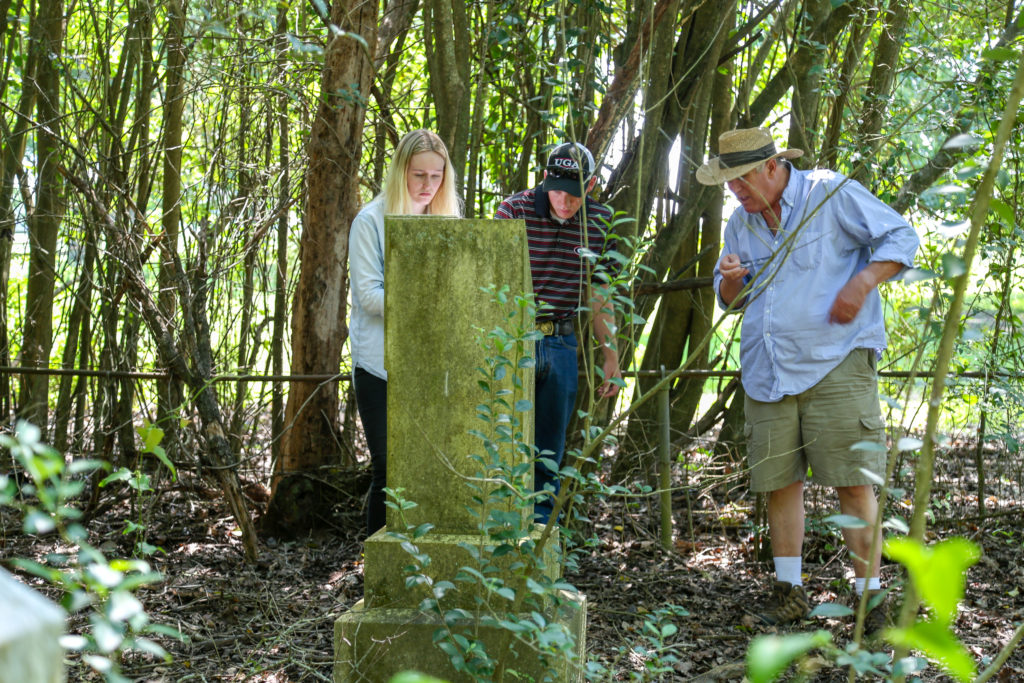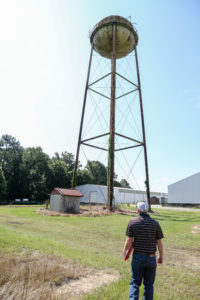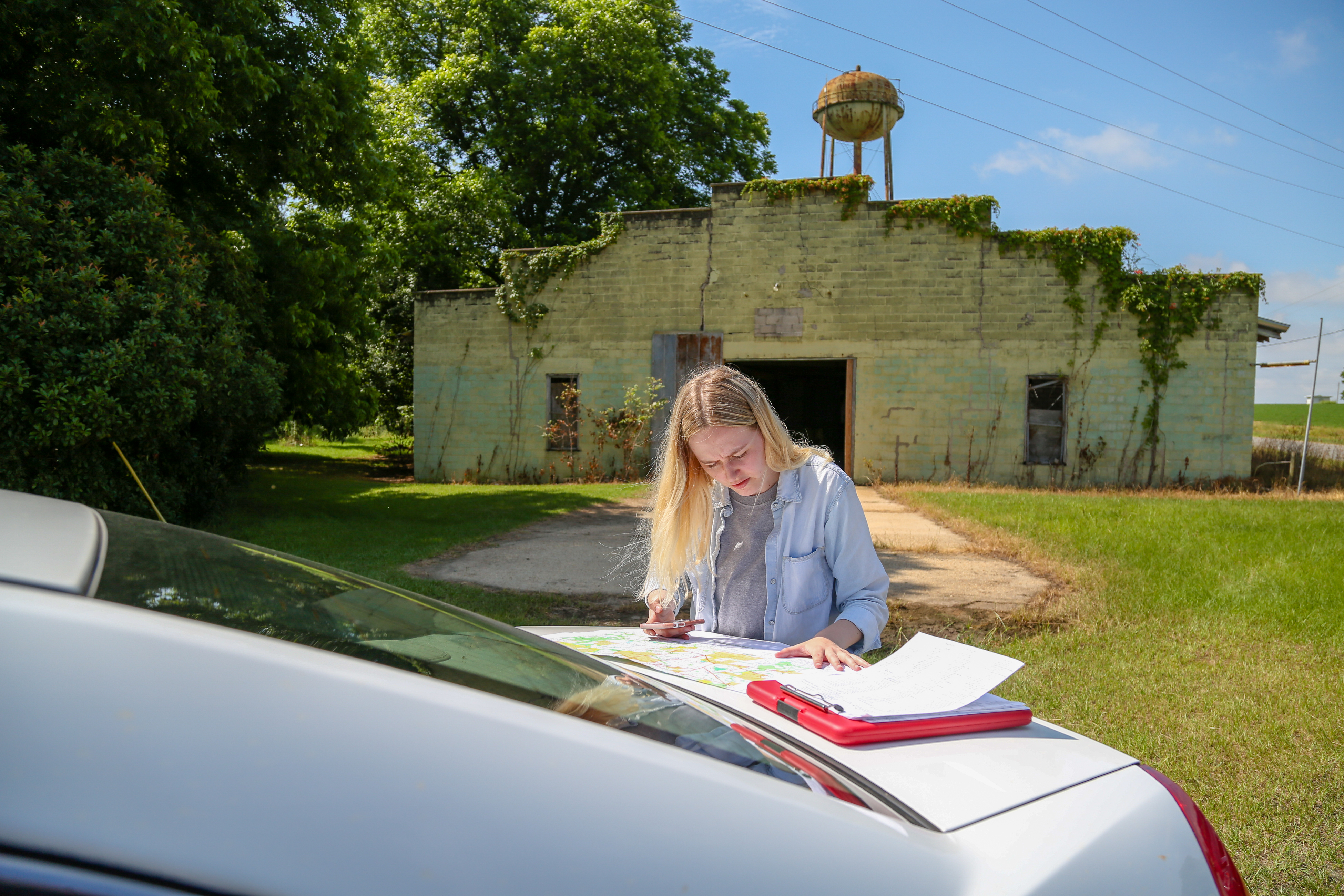University of Georgia students are getting hands-on experience and helping preserve history in rural Georgia through a service-learning program in the College of Environment and Design.
Called Findit, the program sends graduate students studying historic preservation, environment, planning and design, and landscape architecture into a rural county each summer to look for historic properties and sites.
Dooly County
This summer, students are assigned to Dooly County in middle Georgia, south of Macon. The students are looking at properties that are at least 40 years old.
“We see a lot of really cool stuff,” said Findit coordinator Laura Kviklys. “This program takes students to places their classes can’t and teaches them to be professionals. The students get hands-on experience that can be valuable when looking for a full-time job.”

As they were documenting a house that dates back to the 1800s, homeowner Connie Burton Mercer showed them a family cemetery on the site, with several graves dating from the late 1800s to the early 1900s. “So much of the (historic properties) here have been destroyed,” she said.
She pointed to an orchard across the road. “The first operating dairy in the area was over there but it’s not much to see now,” she said. “It’s important to document this. There’s so much in this area that will hopefully be saved.”
Creating an inventory
Since its inception in 2002, CED students have collected data on thousands of properties in more than 60 Georgia counties. The program findings become an inventory for the county and are added to an online database that is available to the public. The findings often result in historic preservation status for properties, which guides county officials, builders and utility companies when they are planning projects.
For Georgia communities, the student surveys are an important first step in understanding what remnants of the past still exist and may be of value historically, culturally or economically. More importantly, they provide communities a framework and quality data for land use planning activities. This knowledge can guide local discussions about what is worthy of protection in the face of growth or demolition, and surveys are often required for certain federal historic preservation planning grants.
“Every time we have an application for a modification in the historic district, we refer to it,” said Tom Brown, chair of Social Circle’s Historic Preservation Commission. Students surveyed Walton County, which includes Social Circle, in 2012.

Hands-on learning
Mills Dorn, who is getting a master’s degree in historic preservation, is part of the team looking for old houses, cemeteries, water towers, barns and other properties to catalog.
On a hot June day, he stopped to study a house that had been altered at some point.
“Originally it was a bungalow; they added this side part later,” Dorn said. “I just finished learning about architectural styles in class so it’s pretty helpful being out here and getting to see them.”
UGA inventory
Kviklys and students also take on smaller projects for local governments and regional commissions during the school year.
The group completed an inventory of all UGA historic properties across the state, which led to the creation of a historic preservation plan that will help the university maintain its historic properties over time. UGA has the most historic properties of the 26 University System of Georgia schools, with more than 730 historic buildings and 55 cultural landscapes across 11 Georgia counties.
CED’s partners in the program are the Georgia Department of Natural Resources Historic Preservation Division and the Georgia Transmission Corporation.


